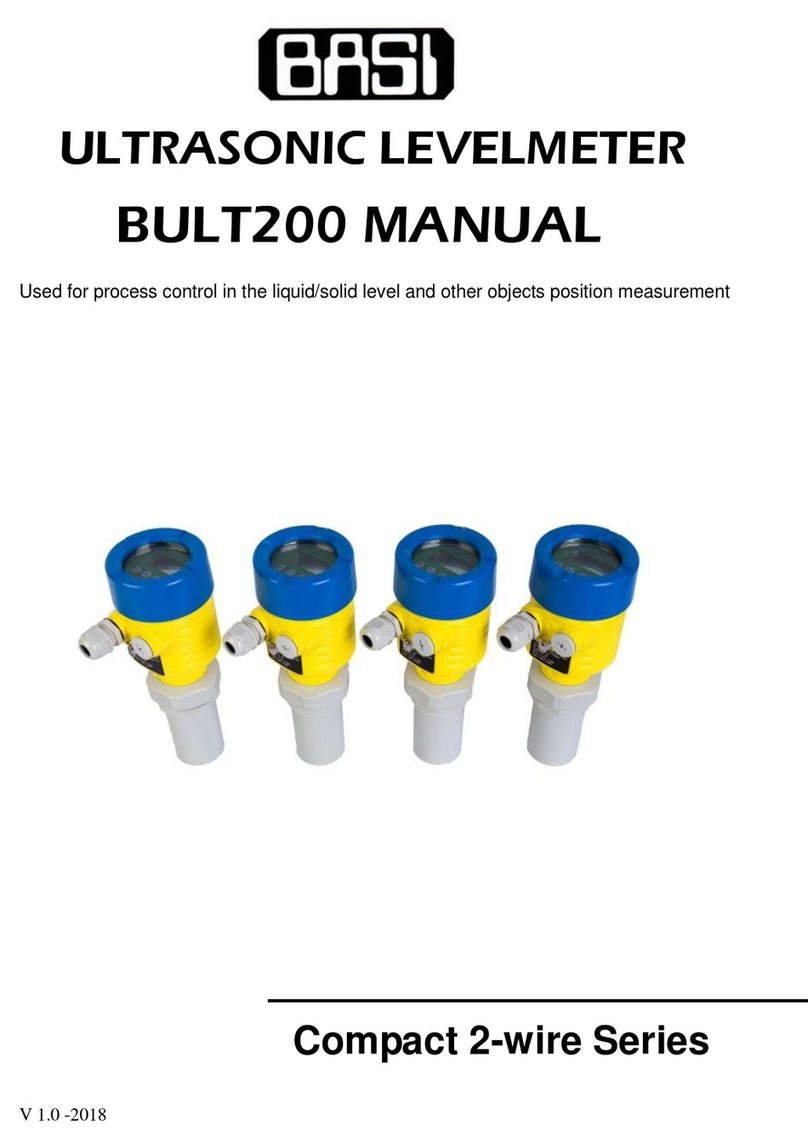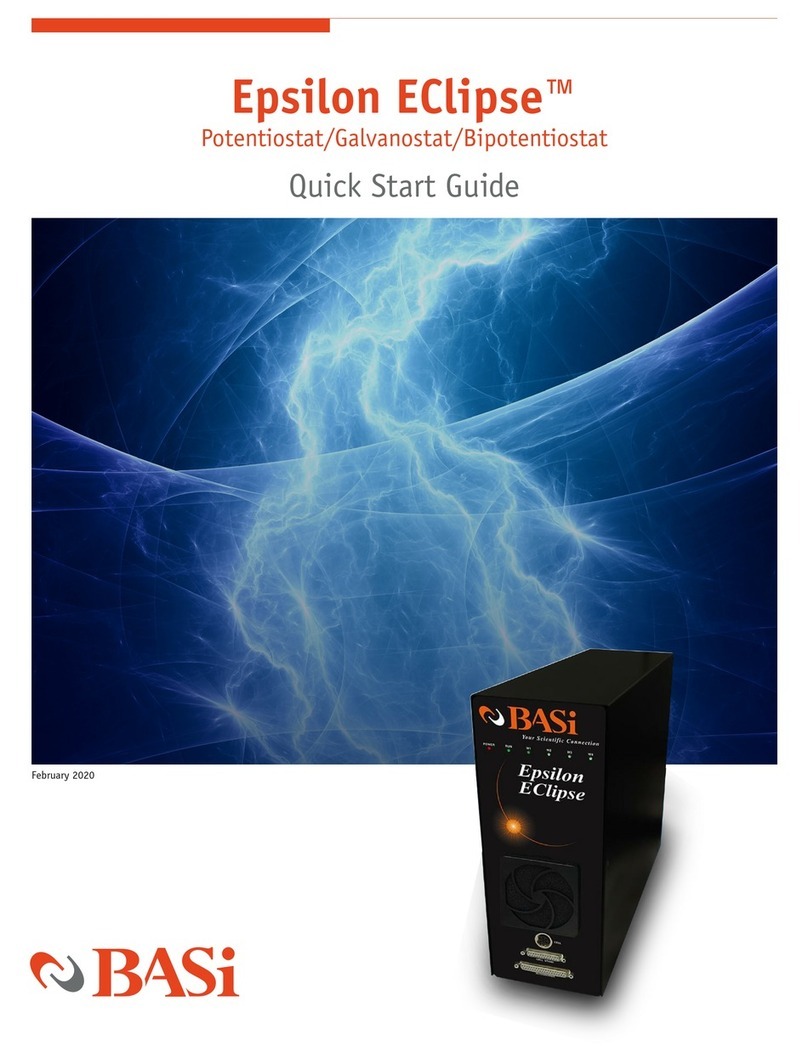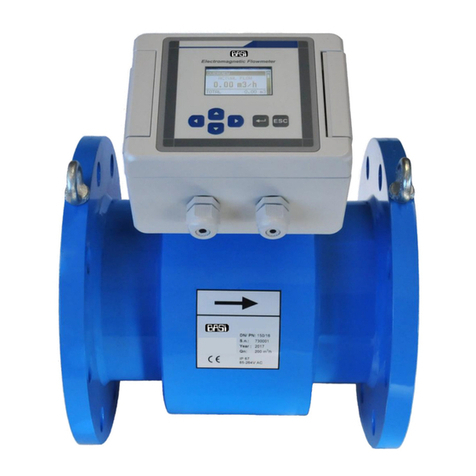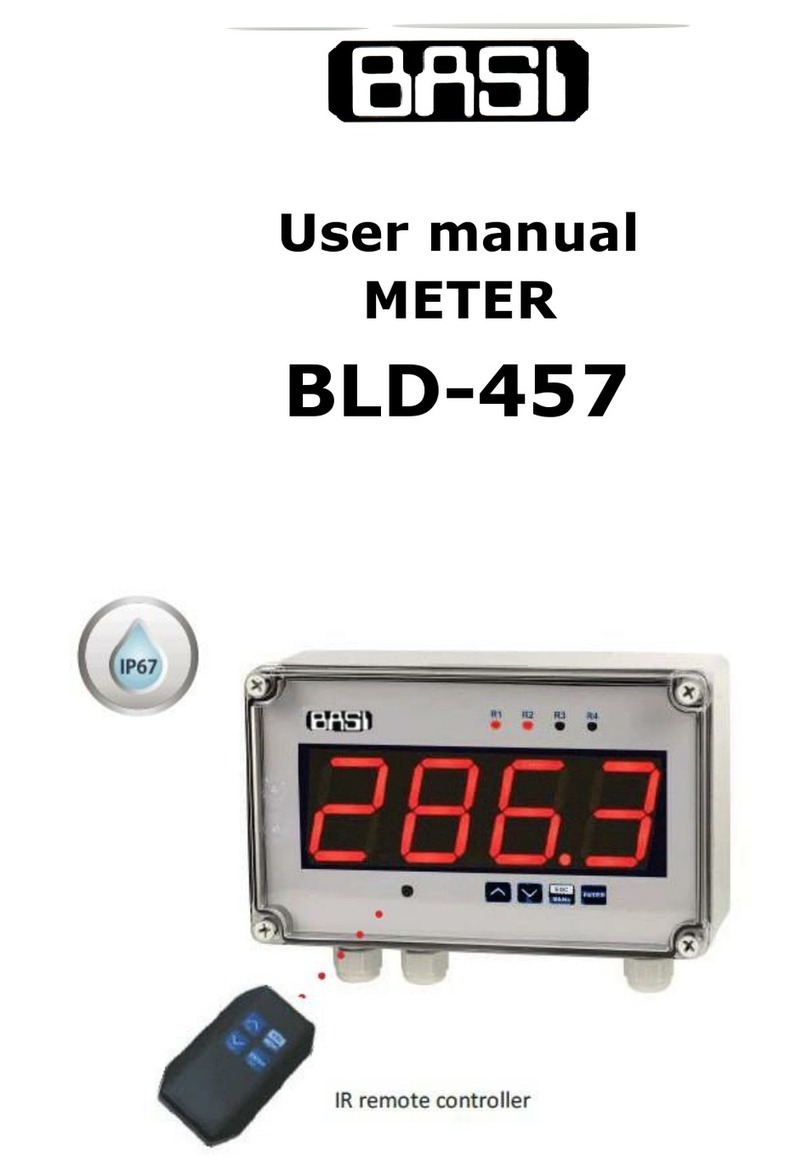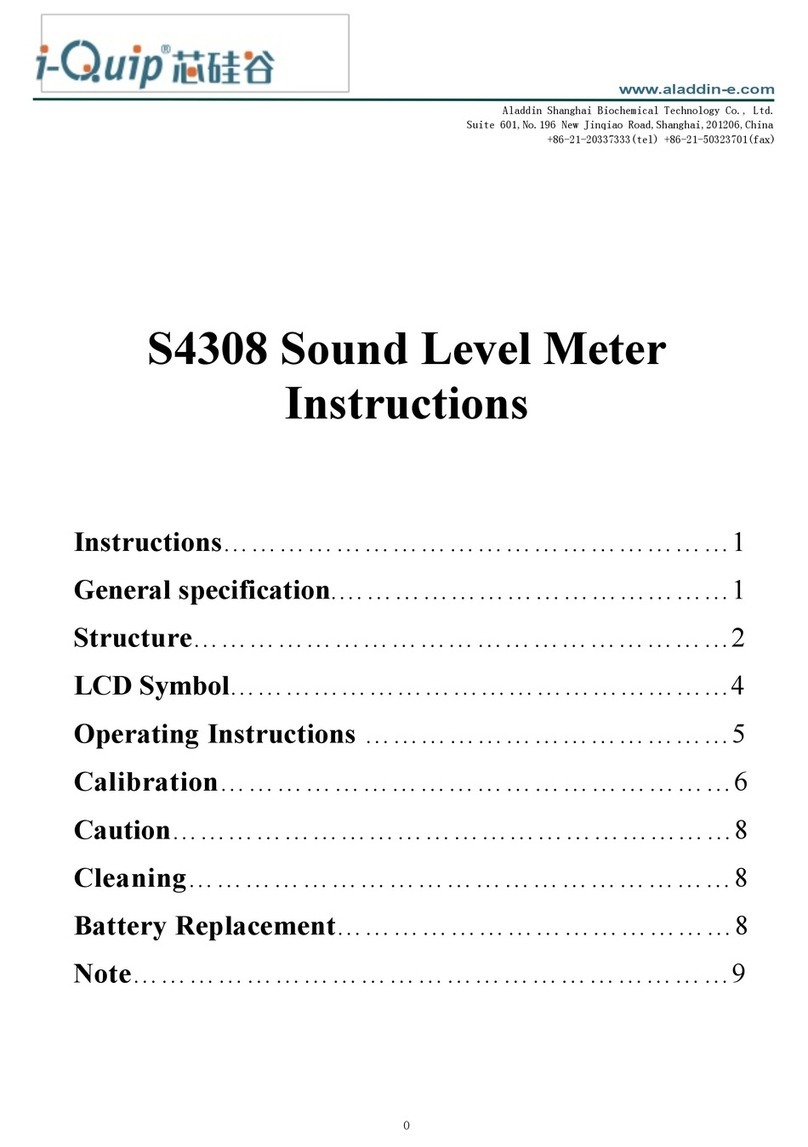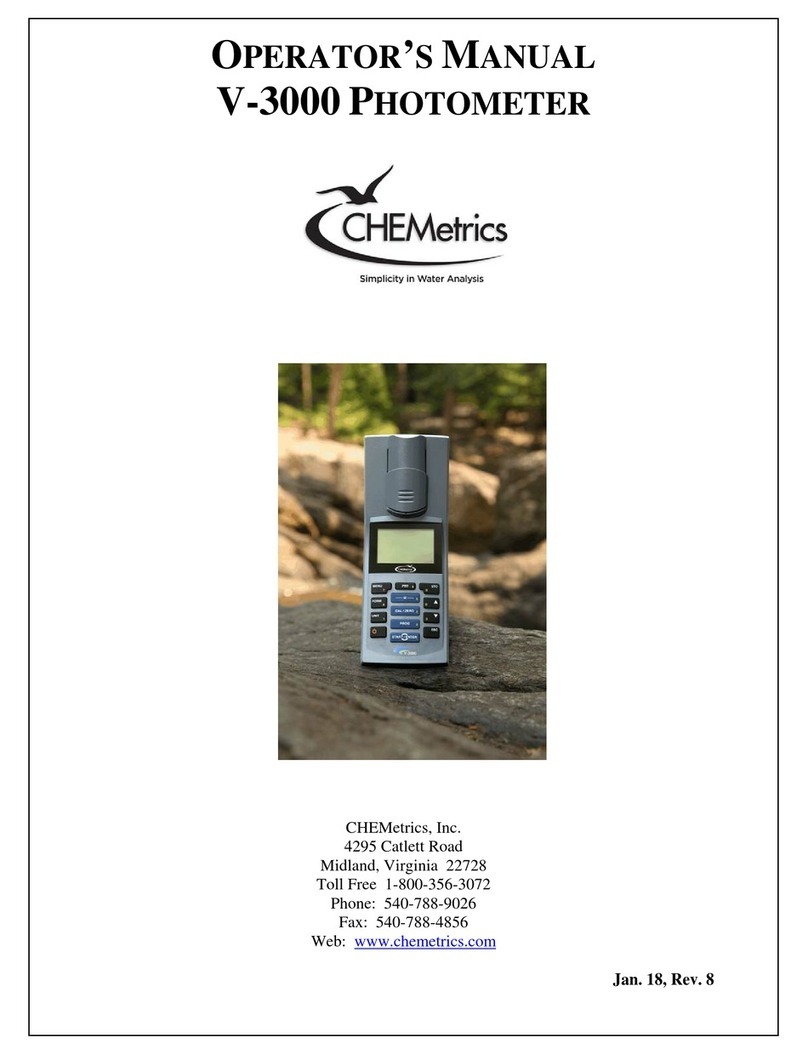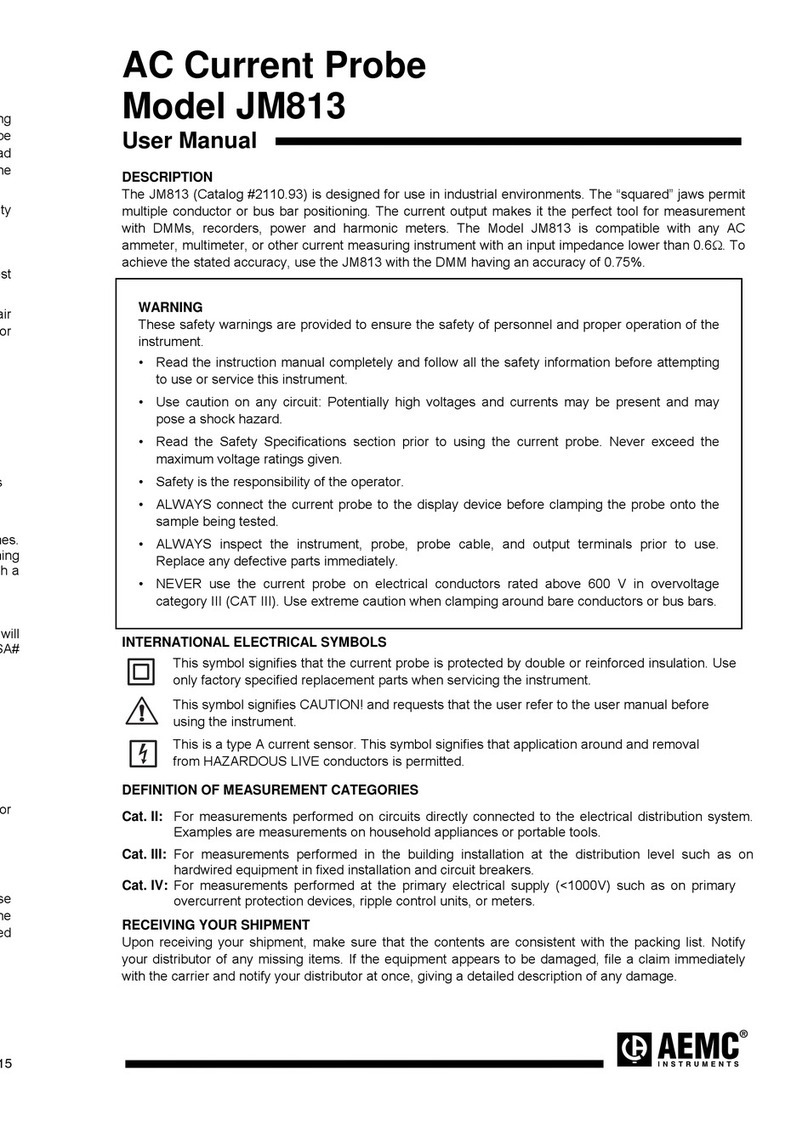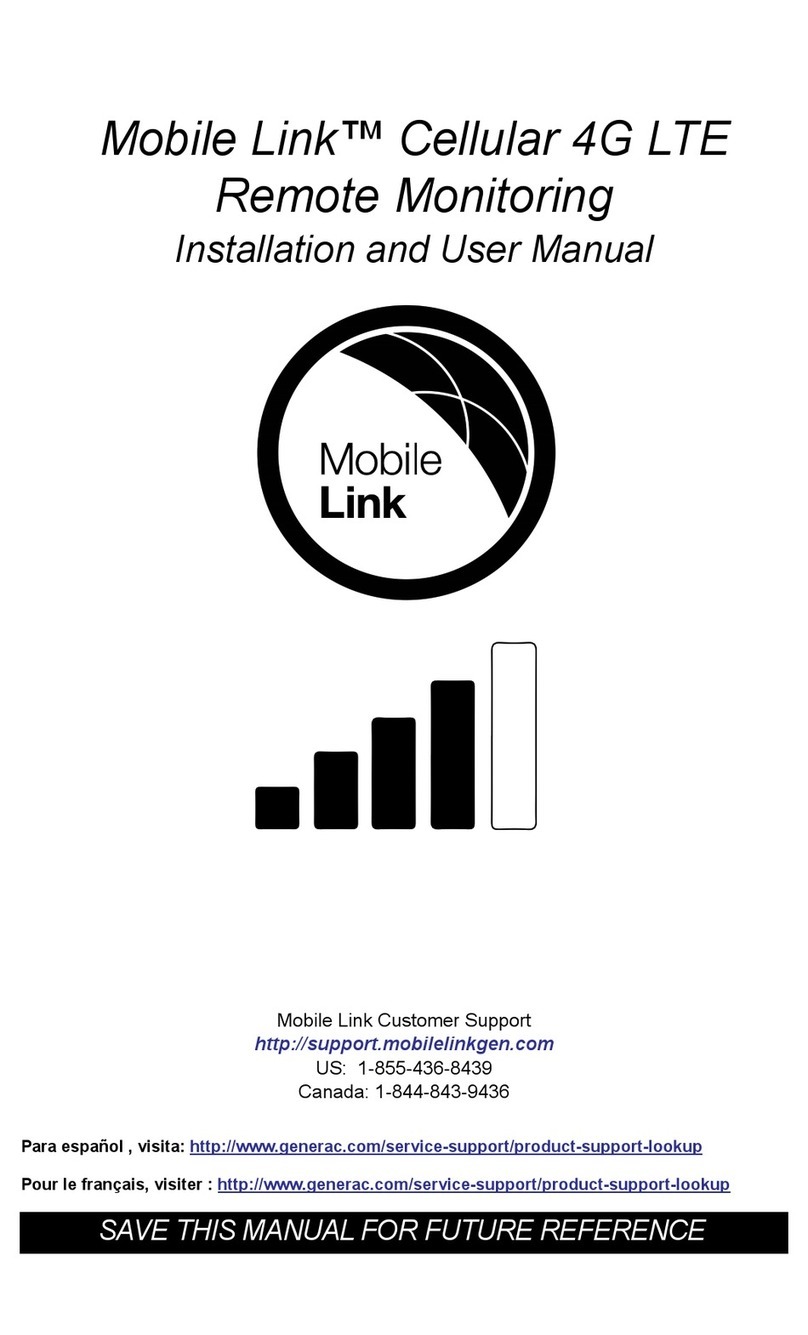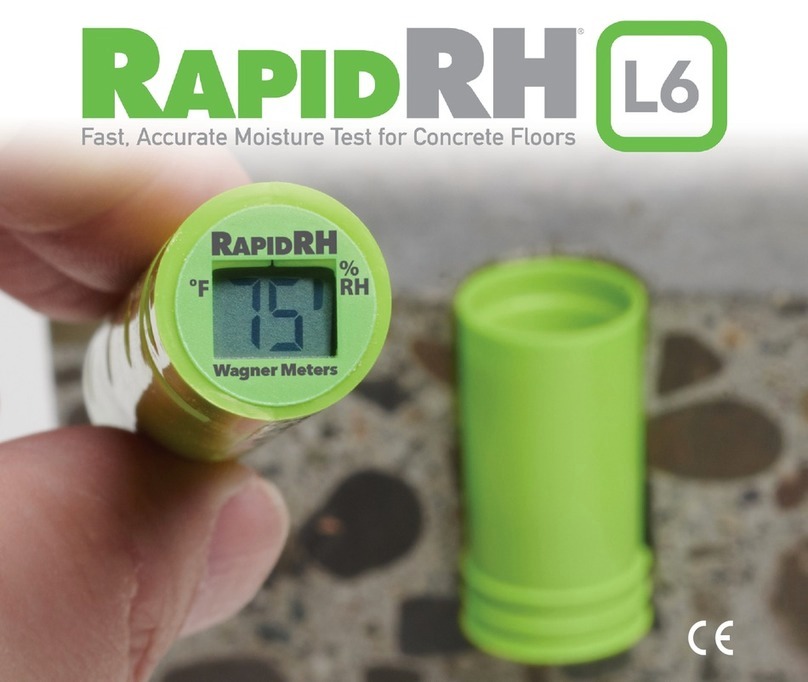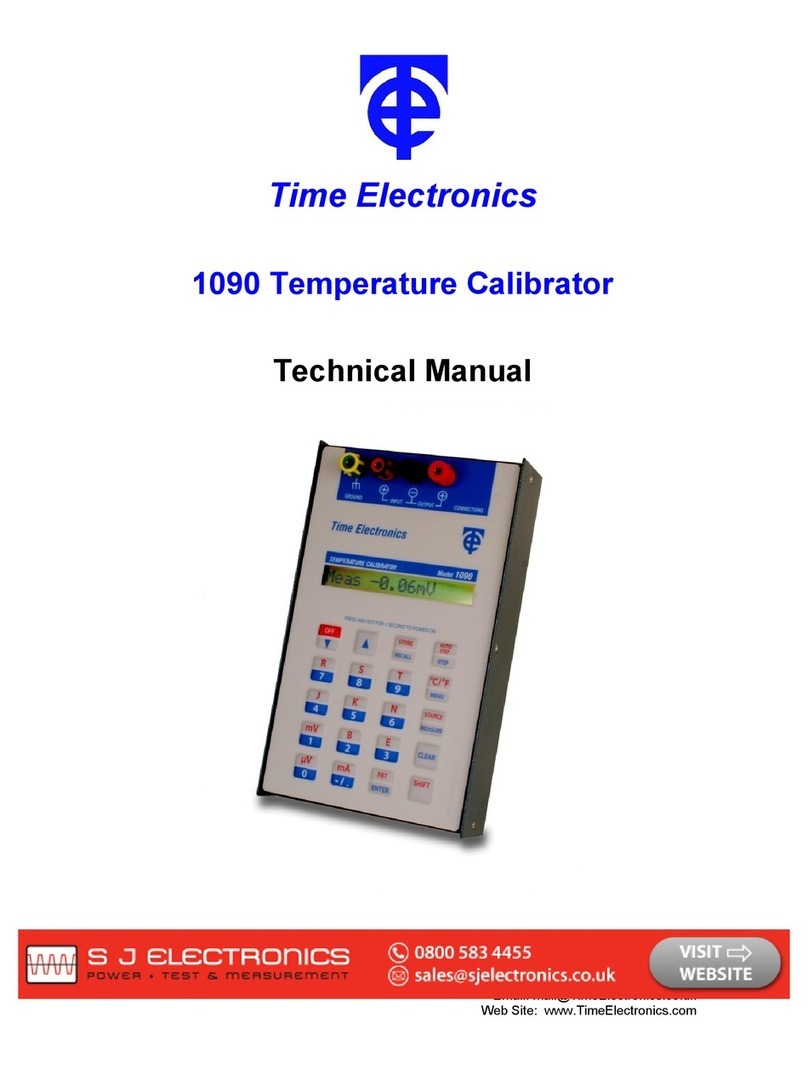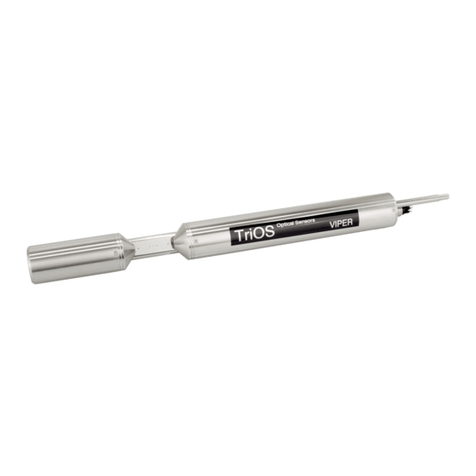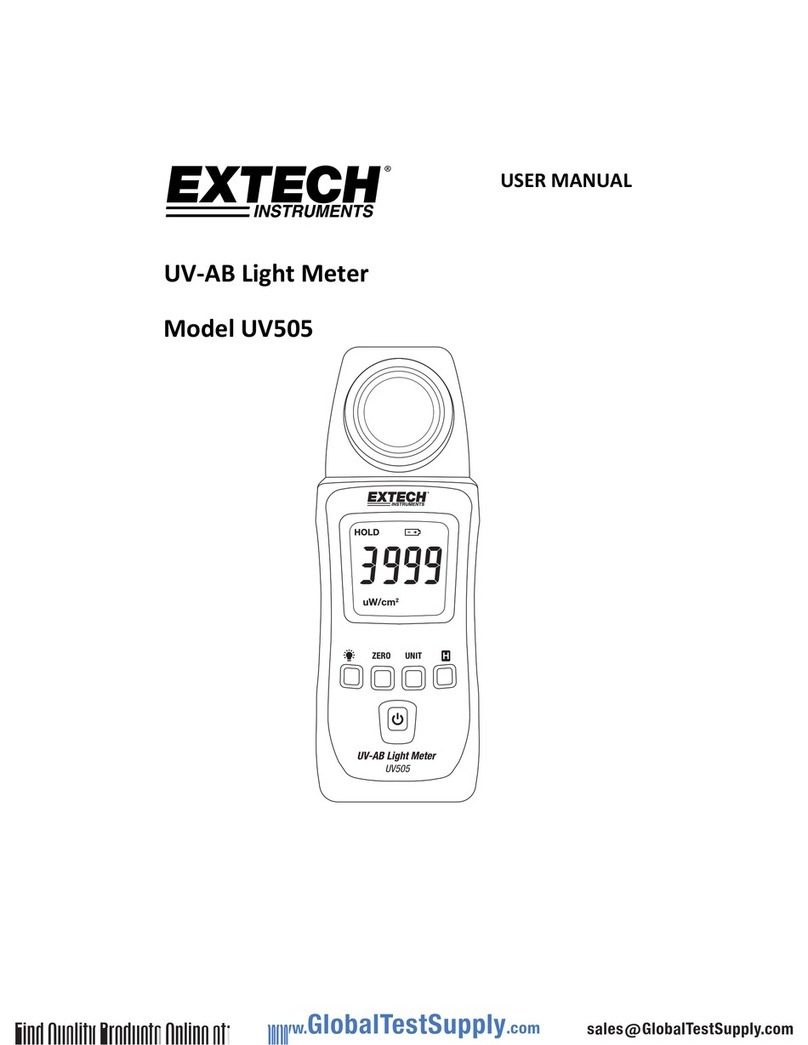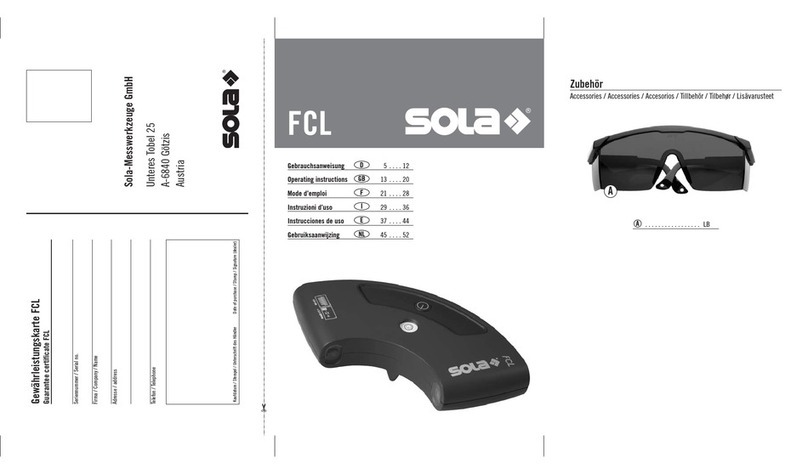BASI BUFM660 Series User manual

MANUAL
Ultrasonic Open Channel Flow Meter

1
Catalog
1. Introduction....................................................................................................................... 2
1.1 Application...................................................................................................................... 2
1.2 Features ........................................................................................................................... 2
1.3 Structure .......................................................................................................................... 3
1.4 Measuring principle: Time-of-flight method................................................................... 4
1.5 Technical data.................................................................................................................. 5
2. Installation......................................................................................................................... 6
2.1 Installation considerations............................................................................................... 6
2.2 Mounting dimensions...................................................................................................... 9
3. Wiring.............................................................................................................................. 12
3.1 The host......................................................................................................................... 12
3.2 Wiring diagram.............................................................................................................. 12
3.3 The cable ....................................................................................................................... 13
3.4 The terminal blocks....................................................................................................... 13
4. Operation......................................................................................................................... 14
4.1 Display and keys ........................................................................................................... 14
4.2 Two working mode ....................................................................................................... 14
5. Calibration....................................................................................................................... 22
General consideration.......................................................................................................... 23
6. Serial communication-Modbus-RTU.............................................................................. 23
Address number................................................................................................................... 23
Baud rate.............................................................................................................................. 23
Parity Check........................................................................................................................ 24
Function code...................................................................................................................... 24
Abnormal corresponding..................................................................................................... 24
Electrical connection........................................................................................................... 24
The RTU mode.................................................................................................................... 24
7. Trouble-shooting............................................................................................................. 27

2
1. Introduction
1.1 Application
The BUFM660 series is a remote version ultrasonic open channel flow meters
(O.C.M.). It consists of two elements, a wall mounted host, which has a
display and an integral keypad for programming, and a probe, which must be
mounted directly above the surface to be monitored. Both of the host and the
probe are plastic leak-proof structure.
The BUFM660 series OCM can be widely applied to the environmental
protection, water treatment, irrigation, chemical, and other industries.
1.2 Features
BUFM660 series O.C.M. is capable of the following functions:
High detection accuracy, the flow meter measurement changes with 1mm,
the accuracy of change in level is 1 mm;
Suitable for a variety of weirs and flumes, Parshall flumes (ISO),
Right-angle triangle weir, Rectangular weir;
Displays flow rate in L/S or M3/h;
Excellent anti-interference capability;
Clear display with enhanced 14 digit two line backlit LCD;
The cable length between probe and host up to 1000m;
The probe with leak-proof structure and IP68 protect grade;
Chemically resistant probe materials for maximum application flexibility;
Provided 4-20mA output and RS485 serial communication
(MODBUS-RTU) output;
Provided programmable 6 relays at most for alarms;
Three button for programming or remote control for easy configuration
and operation(opt.);

3
1.3 Structure
The BUFM660 series O.C.M. consists of a probe and a host. The remote
control is optional.

4
1.4 Measuring principle: Time-of-flight method
The probe is mounted on the top of the flume, and ultrasonic pulses is
transmitted by the probe to the surface of the monitored material. There,
they are reflected back and received by the pro be. The host measures the
time t between pulse transmission and reception. The host uses the time t (and
the velocity of sound c) to calculate the distance d between the sensor bottom
and the monitored liquid surface: d = c •t/2. As the host knows the installation
height H from parameters setting, it can calculate the level as follows: h = H –
d .
Since speed of sound through air is affected by changes in temperature, the
BUFM660 O.C.M. has integrated a temperature senor to improve accuracy.
For determined flumes, there is a fixed functional relationship between the
instantaneous flow and liquid level. The formula is Q=h (x). Q means
instantaneous flow, h means liquid level in flumes. So the host can calculate
the flow rate though determined flumes and the level value.
It is very important to understanding the working principle for further
installation and operation.
Blind zone: Level echo from the blind zone cannot be evaluated due to the
transient characteristics of the sensor. Span F may not extend into the
blanking distance B.

5
1.5 Technical data
1.5.1 The host
Type
BUFM660 (host)
Power supply
DC24V (±5%) 0.2A;
AC220V (±20%) 0.1A
Display
2 lines 14 digit backlit LCD
The instantaneous flow rate
range
0.0000~99999L/S or m3/h
The maximum of
cumulative flow
9999999.9 m3
Accuracy of change in level
1mm or 0.2% of measured distance from
the probe at still water. (whichever is
greater)
Resolution
1mm
Analogue output
4-20mA into 500 Ohms, corresponding to
instantaneous flow rate.
Relays outputs
6 multi-function SPDT relays at most
(optional), rated 5A /250VAC/30VDC,
high, low and failsafe alarm and control
corresponding to instantaneous flow rate or
level.
Serial communication
RS485, MODBUS-RTU standard protocol
Ambient temperature
-40℃~70℃
Temperature compensation
Integral in probe
Pressure range
±0.1MP (press definitely)
Measure cycle
1 second (changeable )
Parameter setting
3 induction buttons / remote control
Cable gland
PG9 /PG11/ PG13.5
Material
ABS
Protect grade
IP67
Fix
Hang
Dimensions
248H*184W*122D(mm)

6
1.5.2 The probe
Type
BLB-4 (probe)
Range
0.00-4.00m
Blind zone
0.20m
Ambient temperature
-40℃~70℃
Temperature compensation
Integral in probe
Pressure range
0.2MPa
Beam angle
10 (3db)
Cable length
10m standard (can be extended to 1000m)
Material
ABS, PVC or PTFE (optional)
Protect grade
IP68
Fix
Screw (G2) or flange (DN65/DN80/etc.)
2. Installation
Reasonable installation is critical factor of the instrument’s normal working.
Installation must be carried out by trained person in accordance with the manual.
2.1 Installation considerations
2.1.1 hints for the host mounting
The host should not be mounted in a confined space where temperatures
may exceed the normal working temperature (-40~+70), if the host is
mounted outside, it must be protected from direct sunlight or severe
weather conditions.
Ensure that the mounting surface is not subject to vibration and is not in
close proximity to high voltage cables, contactors or drive controls.
Select appropriate knockouts in the base of the enclosure and fit
appropriate cable glands to maintain the IP67 rating.
Do not use excessive force when tightening the fixing and avoid any
distortion of the enclosure.
Pay attentions to the dimensions of the host and the enclosure.

7
2.1.2 Hints for probe mounting
The probe can be supplied as standard or with a screw nut or with an
ordered flange.
For applications requiring chemical compatibility the probe is available
fully enclosed in PTFE.
The use of metallic fittings or flanges is not recommended.
For exposed or sunny locations a protective hood is recommended.
Make sure that the probe is mounted perpendicular to the monitored
surface and ideally, at least 0.25 meters above it, because the probe
cannot get response in the blind zone.
The probe has a 10 inclusive conical beam angel at 3 db and must be
mounted with a clear unobstructed sight of the liquid to be measured.
But smooth vertical sidewalls weir tank will not cause false signals.
The probe must be mounted upstream of the flume or weir.
Do not over-tighten the bolts on flange.
The stilling well can be used when there is volatility in the water or
needs to improve the accuracy of level measurement. The still well
connect with the bottom of the weir or flume, and the probe measures
the level in the well.
When install to the cold area, should choose the lengthen sensor and
make the sensor extend into the container, shun frost and icing.
For Parshall flume, the probe should be installed in a position the 2/3
contraction away from the throat.
For triangular weir and rectangular weir, the probe should be installed on
the upstream side, the maximum water depths over the weir and 3~4
times away from the weir plate.

8
Parshall flume
triangular weir
rectangular weir

9
2.2 Mounting dimensions
The host

10

11
The probe
The remote control

12
3. Wiring
The BUFM660 series O.C.M. has one LCD show and three keys for setting and
some terminal blocks, which are located within the host housing and can be
operated when the terminal cover is open.
3.1 The host
3.2 Wiring diagram
Remove the terminal cover to expose the terminals shown below. The wiring
instructions are on bottom of the terminals as below.
DC24V power supply
DC 24v
IN
4-20mA
OUT
RELAY 6
RS485
BROWN
Shield
BLACK
FROM SENSOR
BLUE
RELAY 5
RELAY 4
RELAY 3
RELAY 2
RELAY 1
AB
IR receive window
LCD shown
Keys
Terminal
s

13
AC220v
IN
N L
4-20mA
OUT
RELAY 6
RS485
BROWN
Shield
BLACK
FROM SENSOR
BLUE
RELAY 5
RELAY 4
RELAY 3
RELAY 2
RELAY 1
AB
AC220V power supply
NOTES: The connection maybe different according to the different power
supply and signal output.
When the RS485 serial communication function is provided, the relays can be
provided with 5 pcs at most.
Carefully confirm the marked power supply terminals, to ensure the correct
power supply connection.
3.3 The cable
The cable between probe and host is 10m standard. Users can extend the
cable when desired, and the max distance between probe and host is 1000m.
The cable with three core shield wire is recommended.
3.4 The terminal blocks
The terminal blocks are all self-tightening ones. Use a straight screwdriver to
wire as follow.
Push upward after inserting
close

14
4. Operation
4.1 Display and keys
The BUFM 660 series is displayed with 14 digit LCD in 2 rows, and it has
three keys, with its functions as follow:
Keys
Functions
SEL
Selection of the display content or parameter
INC
Changing the value of the certain digit from 0 to 9 in turn
MOV
Selection of the digit to be changed
4.2 Two working mode
The instrument has two working mode: running mode and programming
mode. In running mode, the measurement is displayed. In programming
mode, data is displayed to assist with setting some parameters.
4.2.1 Running mode
When the power is turned on, the instrument takes several seconds to
initialize and then runs into the running mode to start the normal level and
flow measurement.
In the upper line, there are four values which can be shown in turns by
pressing SEL key : the instantaneous flow rate, liquid level value , distance
value and temperature value.
In the lower line, the cumulative flow rate will be shown, and if there is
active relay, then the number of the relay can be shown in the lower line.
To the left of the main display there will be alphabets shown to indicate the
selected duty. And the measurement units are shown on the right side.
the instantaneous flow rate
liquid level value

15
distance value
the temperature
Notes:
The instantaneous flow rate will be shown at first after powered on or
exiting from programming mode.
There are two units of measurement on the right side of the panel for
instantaneous flow rate: M3/H and L/S, there is “-” symbol point to the
current unit. It can be set up in programming mode with FU00
parameters to choose which unit to be shown.
The unit of measurement for accumulated flow rate is M3 , and the unit
for liquid level and space is M, the unit for temperature is ℃。
The output current is always corresponding to the instantaneous flow
rate, no matter which value disappears on the panel.
The maximum of accumulated flow rate is 9999999.9m3, it will start
from 0 to accumulate again after the maximum.
The accumulated flow rate is saved per minute, it can be set up in
programming mode with FCab parameters to reset or keep continuous
accumulation.
If the symbol “-” on the right side of the LCD display keeps flashing,
that means the communication between the probe and the host is
normal.
If there is no echo, the BUFM660 will show like this.

16
The installation height (H) must be set NO less than (≧) the measured
distance (D) value. If H is less than D, then the symbol in the left side
will keep flashing, except the distance value, the instantaneous flow
rate and level value and the output current will not change.
The BUFM660 series can provide 6 relays which may be used for
control purposes. These relays are for light duty and should be used as
signal relays only, with control functions being performed by external
control relays.

17
4.2.2 Programming mode
In the programming mode data is displayed to assist with parameter setting.
When SEL and MOV keys are pressed simultaneously and released them
immediately, the instrument can enter or exit of the mode. Press SEL key to
select the content, they will be shown in turn. In each parameter, press MOV
to choose the changeable digit,the chosen digit will become dark, and press
INC to change the value, numbers are shown 0-9 in turns. After setting the
right values, press SEL to save and turn into next parameter.
Please pay attention to the sign in the following examples.
Significance
Shown
parameters
Notes
Weir type number
(Must be set
correctly)
There are three types of weir can be chosen in this
version BUFM660: Parshall flumes (ISO), Right-angle
triangle weir, rectangular weir.
This parameter displays in the form of “Pabc”, “P” is
unchangeable, the latter three digits “abc” determines
the chosen weir type number.
Please referring to the follow “the weir type number
table”.
Installation height
(Must be set
correctly)
The height is the distance from the bottom of
transmitter to the bottom of the weir.
The unit is M (meter).
Full scale of
instantaneous flow
rate
(Must be set
correctly)
The 20 mAoutput current corresponding instantaneous
flow rate.
Please set the value at first , the unit of the flow rate
can be chosen in the latter parameters “Fuab”.
This parameter displays in the form of five digits
“abcd0”. The former four digits are changeable, the
finial digit “0” is unchangeable. And the position of the
decimal is decided by the first parameter “Weir type
number”.
Calibration of
output current
This parameter is used for correction of small output
current error. The front two digits before the decimal
point are used for correction of 20 mA, when the value
increases, the 20mAoutput current will also increase.
The latter two digits are used for correction of 4 mA,
when the value increases, the 4 mA output will also
increase, and vice versa.

18
The address number
(RS485)
In RS485 serial communication, the instrument is used
as slave, each one has an address number. The valid
number addresses are in the range 0-247.
Communications
setting
This parameter displays in the form of “Cabc”, the last
three digits “abc”are changeable, which decide the
baud rate 、transmission mode and parity check.
The first digit “a” corresponds to baud rate (bit/s).
When a=0, the baud rate is 19200; a=1, the rate is
9600; a=2, the rate is 4800.
The second digit “b” corresponds to transmission
mode. When b=0, the mode is RTU; b=1, the mode is
ASCIIC (invalid now).
The third digit ”c” corresponds to parity check. When
c=0, means even check; c=1 means odd check; c=2,
means no check (8N2); c=3, means no check (8IN1).
Communications
delay
The delay time for meter to send the data after
receiving the master’s request. The format of this
parameters is “d-bc”, the last two digits “bc”are
changeable, and the value of “bc”decides the delay
time in milliseconds. Such as d-10 means the
instrument will send data after 10 milliseconds.
Status of relay No.1
(Correspond to
instantaneous flow
rate)
The format of this parameter is “EC-ab”, the front two
digits “EC” are unchangeable, the latter two “ab”
determine the states of relay No.1.
“a” corresponds to the contact status. When a=0, the
relay No.1 is normally open; a=1, the relay No.1 is
normally close.
“b” corresponds to the high or low alarm status. When
b=0, the relay No.1 is used as a low alarm, b=1, the
relay No.1 is a high alarm.
On and off point
value of relay No.1
(Correspond to
instantaneous flow
rate)
The on and off point value of relay No.1, when the
instantaneous flow rate is greater or less than this
value, then the relay No.1 will work as its setting
status. This parameter displays in form of 5 digit
number, they can be adjusted except the final “0”.
When all the five digits are “0”, then the relay No.1
will keep open status and stop working, no matter what
kinds of status value be set.
Status of relay No.2
(Correspond to
instantaneous flow
rate or Accumulated
Flow Pulse )
This parameter determines the status of relay No.2, its
setting form is same with previous Relay No.1.
But when it is set at “EC20”, the relay No.2 is used to
output the Accumulated Flow Pulse. Accumulated
flow for each additional 1m3 , relay 2 will be

19
energized again. The hold time is 500ms, after it will
be disconnecting.
On and off point
value of relay No.2
(Correspond to
instantaneous flow
rate)
Same with on and off point value of No.1. Correspond
to instantaneous flow rate.
But when the relay No.2 is set as Accumulated Flow
Pulse , then this value is invalid, no need to set this
parameter.
Status of relay No.3
(Correspond to
level in the weir)
This parameter determines the status of relay No.3, its
setting form is same with previous Relay No.1.
On and off point
value of relay No.3
(Correspond to
level in the weir)
Same with on and off point value of No.1. Correspond
to level in the weir.
Status of relay No.4
(Correspond to
level in the weir or
Accumulated Flow
Pulse )
This parameter determines the status of relay No.4, its
setting form is same with previous Relay No.1.
But when it is set at “EC20”, the relay No.4 is used to
output the Accumulated Flow Pulse. Accumulated
flow for each additional 1m3 , relay 4 will be
energized again. The hold time is 500ms, after it will
be disconnecting.
On and off point
value of relay No.4
(Correspond to
level in the weir)
Same with on and off point value of No.1. Correspond
to level in the weir.
But when the relay No.4 is set as Accumulated Flow
Pulse , then this value is invalid, no need to set this
parameter.
Status of relay No.5
(Correspond to
level in the weir or
fault alarm)
This parameter determines the status of relay No.4, its
setting form is same with previous Relay No.1.
But when it is set at “EC20”, the relay No.5 is used as
fault alarm, if there is fault with sensor or no signal
detected, the relay No.5 will be closed , if not, it will
keep opening.
On and off point
value of relay No.5
Same with on and off point value of No.1. Correspond
to level in the weir.
But when the relay No.5 is set as fault alarm, then this
value is invalid, no need to set this parameter.
The delay time of
relays action
This parameter displays in form of “F-ab”, the last two
digits “ab” determines the delay time of relays action.
The unit is seconds. Such as it is set as “F-05”, it means
the delay time of relays action is 5 seconds. This
parameter is designed to prevent repeatedly open and
close of the relays caused by the liquid surface
fluctuation, also to avoid frequent opening of pump and
alarms.
Table of contents
Other BASI Measuring Instrument manuals
Popular Measuring Instrument manuals by other brands
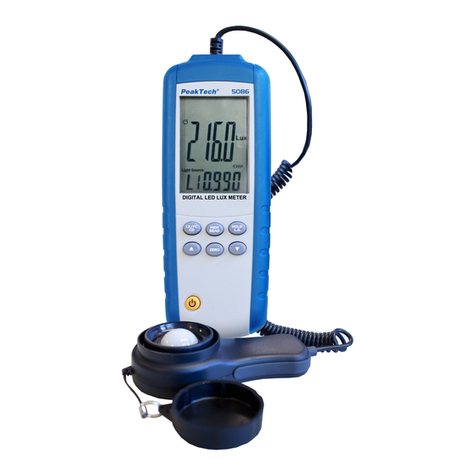
PeakTech
PeakTech 5086 operating manual
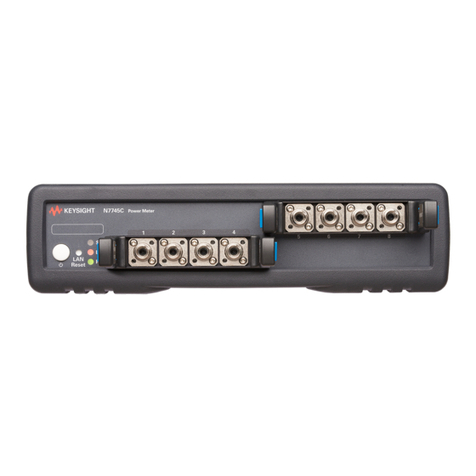
Keysight
Keysight N774 C Series Programming guide
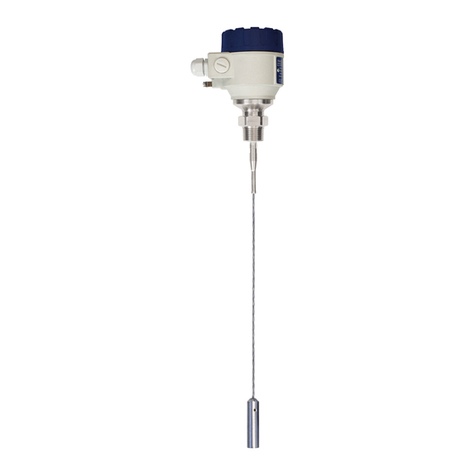
NIVELCO
NIVELCO MicroTREK HT User and programming manual

Emerson
Emerson FB1200 use instructions
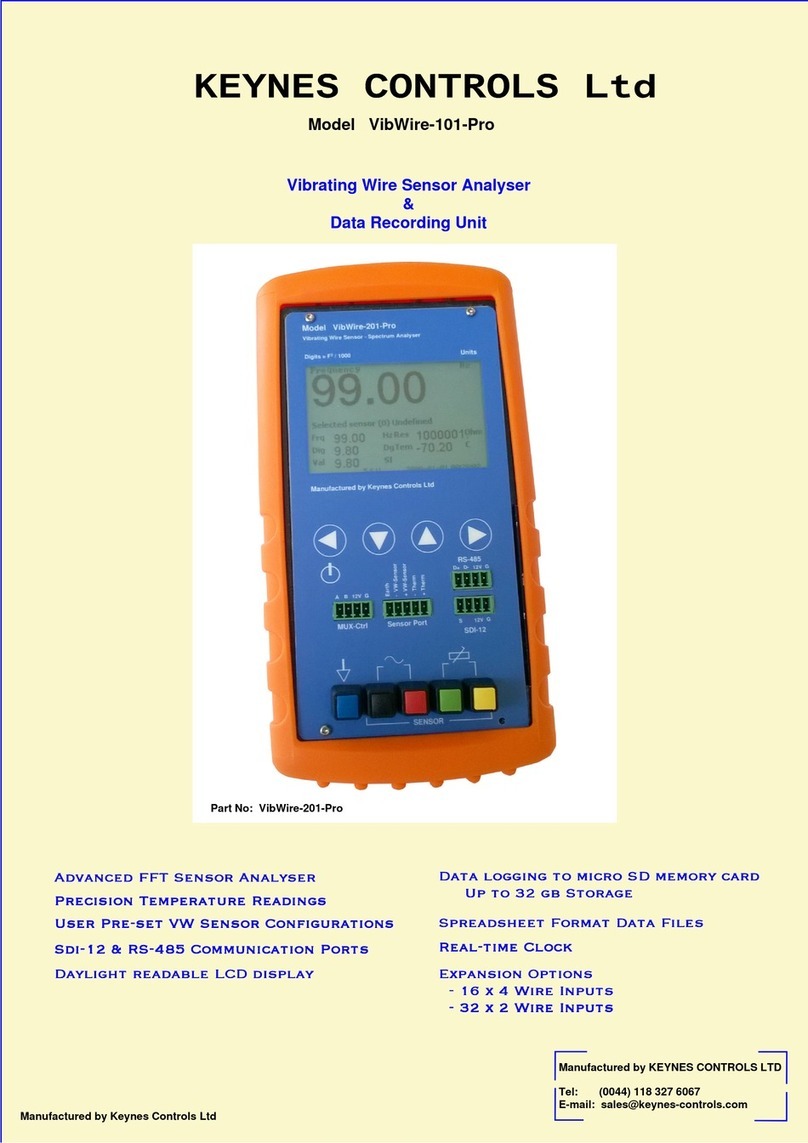
Keynes Controls
Keynes Controls VibWire-201-Pro user manual
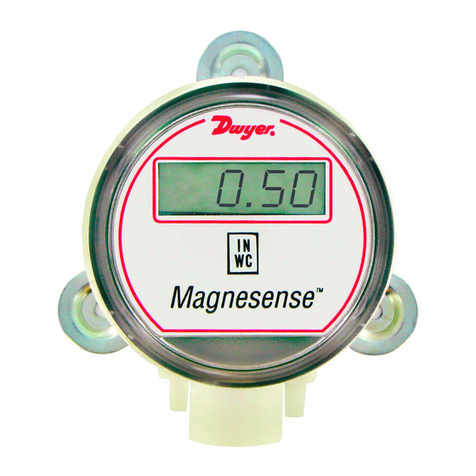
Dwyer Instruments
Dwyer Instruments MS-021 Installation and operating instructions
